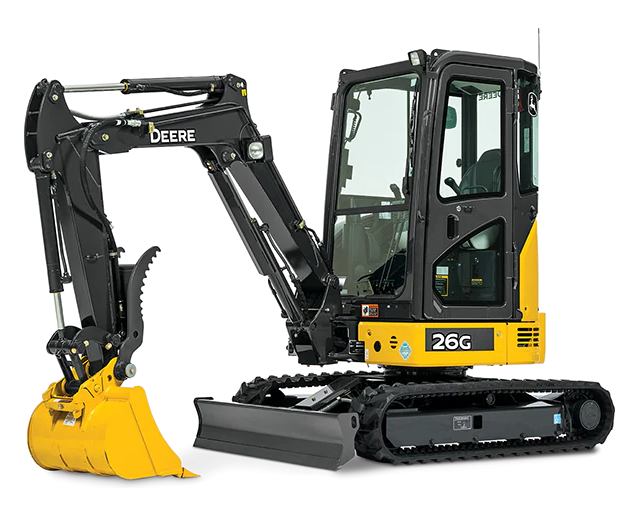Rental Company Near Me: Neighborhood Solutions for Equipment Rentals
Rental Company Near Me: Neighborhood Solutions for Equipment Rentals
Blog Article
Maximize Your Spending Plan by Understanding the Costs Related To Construction Tools Services
Comprehending the complete extent of costs associated with building and construction devices services is essential for maximizing your spending plan. What approaches can be utilized to successfully handle these expenses and make certain a more reliable rental experience?
Introduction of Rental Expenses
When thinking about construction equipment services, comprehending the linked expenses is vital for efficient budgeting and project preparation. Rental prices can vary dramatically based on numerous aspects, including devices type, period of service, and area. The first rental cost typically mirrors the devices's market demand and its linked functional capabilities, influencing the total expenditure.
In enhancement to the base rental price, secondary expenses might emerge, such as transport charges, gas additional charges, and maintenance costs. It is vital to represent these extra expenditures to precisely analyze the complete price of renting tools. Moreover, the rental duration can influence rates; longer leasings may receive reduced rates, while short-term leasings might sustain greater daily fees.

Break Down of Rental Rates
A detailed understanding of rental prices is important for contractors and job supervisors aiming to enhance their budgets. Rental prices for construction devices commonly contain a number of elements, consisting of base prices, time-based costs, and use costs.
Base rates are the core charges associated with the rental of the devices, often figured out by the kind and dimension of the equipment. These prices can vary significantly, influenced by factors such as tools need, availability, and local market patterns. Time-based costs, which might be daily, weekly, or monthly, serve to suit different project timelines and rental periods.
Furthermore, rental rates might include use charges, which are suitable when equipment is made use of beyond a defined threshold, guaranteeing that the rental firm can represent wear and tear. Seasonal need variations can also impact rental rates, with peak building and construction periods typically regulating higher costs.
Moreover, understanding the rental business's plans pertaining to upkeep and insurance can supply further insight right into the overall price structure. By analyzing these elements, contractors can make educated choices, making certain the option of rental equipment lines up with both task requirements and budget plan restraints.
Additional Fees to Take Into Consideration
Understanding the complexities of extra charges is crucial for contractors to manage their overall service expenses effectively. Beyond the basic rental rates, different supplementary charges can considerably affect the overall cost of tools rental. These fees frequently include delivery and pick-up costs, which can vary based upon distance and logistics associated with carrying the equipment to and from the job site.
Moreover, some rental firms might enforce fuel surcharges if the equipment is returned with much less fuel than when rented. It is also important to recognize potential cleansing fees, particularly for specialized tools that needs complete maintenance after use.

Extensively examining the rental agreement and making clear these extra fees ahead of time can help service providers ensure and stay clear of unforeseen costs that spending plans stay intact throughout the task lifecycle.
Maintenance and Repair Costs
Regular upkeep and repair costs are frequently forgotten aspects that can significantly affect the overall expense of construction tools services. When leasing tools, it is important to take into consideration not only the rental charges yet likewise the possible costs connected with maintaining the machinery in ideal operating problem.
Many rental business consist of basic maintenance as component of the rental arrangement; however, a lot more unforeseen failures or substantial repairs can result in extra expenditures. It's essential to evaluate the rental contract very carefully to recognize what maintenance services are covered and what responsibilities fall on the tenant.
Moreover, devices that is not properly maintained can bring about inefficiencies at work site, potentially causing delays and enhancing job prices. To reduce these threats, it is suggested to perform normal examinations and keep open communication with the rental service provider pertaining to any kind of concerns that emerge throughout use.
Insurance Coverage and Obligation Expenses
Insurance and liability prices why not look here are important parts that can substantially affect the general expense of construction tools leasings (construction equipment rentals). These expenses ensure that both the rental firm and the customer are safeguarded from potential economic losses emerging from crashes, damage, or theft throughout the rental roller machine construction period

Furthermore, customers ought to recognize any type of deductibles or exclusions in the insurance coverage plan, as these can affect prospective out-of-pocket costs. Understanding the terms and problems of any insurance policy coverage is important to stay clear of unanticipated costs. Eventually, budgeting for insurance policy and responsibility costs can help make sure a smoother rental experience and protect against economic threats connected with construction projects.
Conclusion
In final thought, an extensive understanding of the costs linked with construction equipment rentals is essential for efficient spending plan administration. Eventually, informed decision-making pertaining to equipment rentals contributes to the general success of construction endeavors.
Rental prices can differ significantly based on a number of variables, including tools kind, period of rental, and area (heavy equipment rental). The rental duration can influence pricing; longer services may certify for reduced rates, while short-term services might sustain greater day-to-day charges
By conducting extensive research and involving with trustworthy rental firms, service providers can successfully navigate the complexities of rental rates, ultimately maximizing their economic sources.
Beyond the conventional rental rates, different supplementary costs can considerably affect the overall cost of tools service. Rental firms typically offer liability insurance that covers injuries to third events or damages to residential property, while tools damages insurance can cover the expense of repair services or replacement if the rented out equipment is damaged.
Report this page